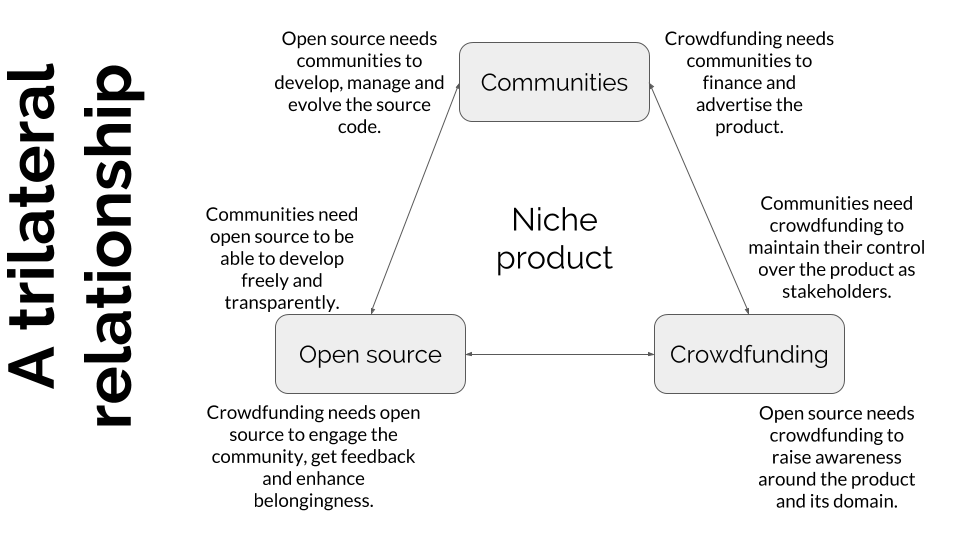Crowdfunding open source products
02 July 2018
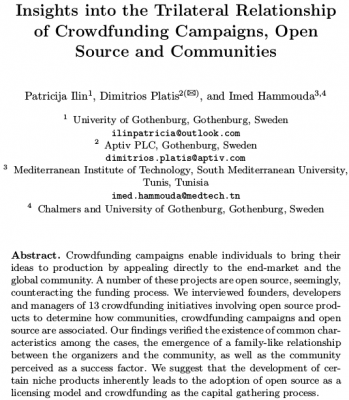
When developing something that solves a big, small or silly problem I ask myself, usually as a mental exercise: How can I make money out of this? Sometimes, this thought experiment is concluded by a crowdfunding campaign where my cool gadget receives support by like-minded enthusiasts who pitch in and help bring it to mass production. Additionally, as an open source proponent I enjoy publishing my work, however this is ultimately a business move. Unfortunately, the lack of insights on the matter deems such decisions difficult and, as the devil is in the detail, surrounds the initiative’s feasibility with uncertainty.
Open source systems are becoming mainstream both for daily users but also stringent domains such as the automotive industry. While there are various business models for open source, there’s not much research on how it can be combined with the funding method which shares a similar level of transparency and openness: Crowdfunding. A couple of weeks ago, I was in Athens attending the 14th International Conference on Open Source Systems, OSS2018. Along with my co-author, Patricia Ilin, we presented a study on crowdfunding campaigns of open source products and how does their relationship with the relevant communities look like. What sparked our interest on the topic was the oxymoron of convincing individuals all around the world to (pre)pay for a product they can eventually get for free. Or could they? Is it actually so? Keep reading to find out.
First things first, the paper was largely based on Patricia’s BSc thesis while professor Imed Hammouda and myself were primarily involved into decreasing its size to fit within the conference page limit. She interviewed 13 individuals who were involved in one or more crowdfunding campaigns of open source products. The products were aiming towards Makers/Hackers/Developers and included some big names in the scene. This is an admittedly narrow market segment. However the great majority of open source crowdfunded products are in fact targeting the specific group (e.g. Indiegogo, Kickstarter, CrowdSupply) while crowdfunding overall tends to go for niches. At the same time, the campaigns were steered by small teams and more often than not the person who was interviewed assumed multiple roles, i.e. founder, campaign manager and developer.
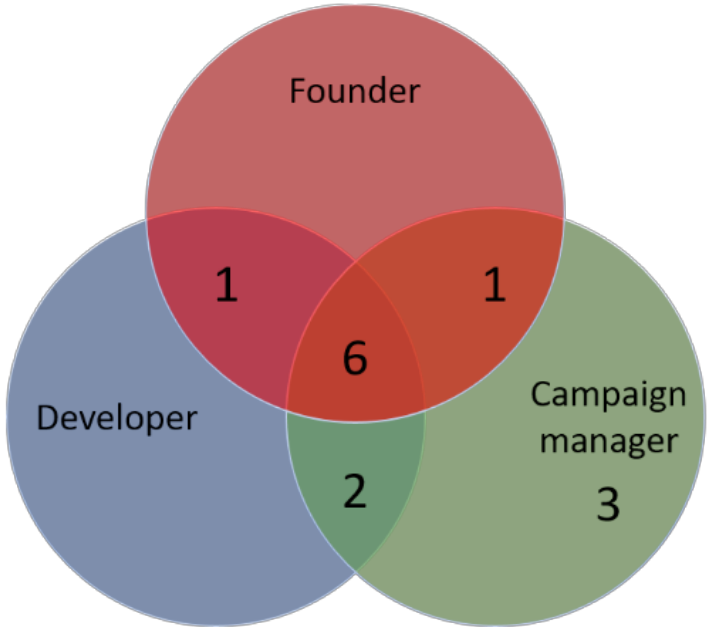
Furthermore onto the identity of the products that were investigated, we classified them per their profit potential, using a method proposed by Sandeep Krishnamurthy in his work on open source business models, which by the way is a read I wholeheartedly suggest. In brief, the model proposes open source products to be categorized based on two criteria, their customer applicability and relative importance. We assessed the customer applicability of the products we studied to be rather low, as they did not appeal to a broad audience, thus we classified them as low or high profile nichers. Here it should be noted that most crowdfunded products would probably be characterized by relatively low customer applicability and therefore would fall under the same category.
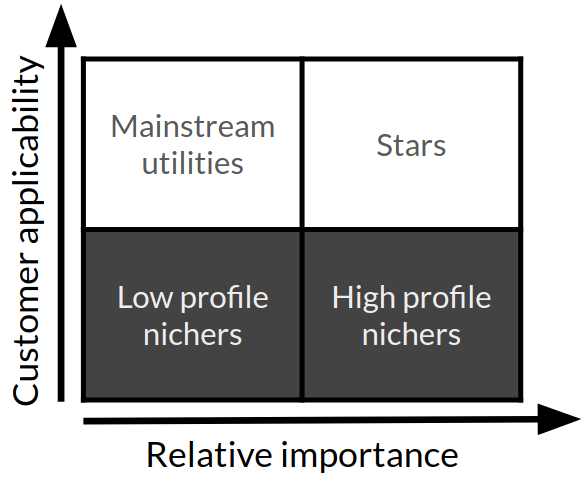
Moreover, all crowdfunding campaigns we looked into revolved around physical products, the majority of which published both their software and hardware under an open source license. This could be introducing some bias into the study. However, yet again, physical products comprised the overwhelming majority of the open source crowdfunded products we found online. Next, most crowdfunding campaigns were successful which is overall not the case, this being another aspect which might threaten our validity. Please take the above into careful consideration while reviewing our results and, especially, when attempting to generalize the findings by applying them on non-maker, non-physical, mainstream open source products.
The overall idea was to formulate a solid opinion of what’s up with crowdfunding open source products, so we delved into the topic by trying to find answers to three research questions: 1) What are the characteristics of a crowdfunding campaign of open source products?, 2) How can the relationship and communication between the campaign organizers and the community be described? and 3) What is the impact of the community on an open source crowdfunding campaign according to the organizers perspective?
Looking into the campaign characteristics we isolated some common motives as to why they chose to open source their product and crowdfund it. First off, inspiring others, facilitating innovation and of course, getting feedback was brought up a lot during out discussions. Additionally, the organizers wanted to raise awareness around their technical domain and popularize it. After all, this bottom-up funding approach generally resonates well with Makers and enables the campaign to appear as less “profit-oriented”. Crowdfunding was even considered a low risk process if a product has already formulated a community, since it is very likely to support the step towards mass production and monetization. However, the incentives to organize a crowdfunded campaign of an open source product were not always positive. It seems like in a plenty occasions crowdfunding was the only option as investors either did not take open source seriously, which was also the case with some mainstream media, or even held a negative stance perceiving it as devaluation of the intellectual capital. Moreover, the interviewees stated that open sourcing was commonly a token of gratitude for the help they received themselves but also, due to the community, thus potential supporters, expecting this. Anticipating open source, was particularly apparent in the case of security related products, where openness is a strict requirement but also when having access to the source multiplied the value for the customer. Specifically, being able to readily create a derivative of a microcontroller development board or a single board computer was highly appreciated. Expectations aside, releasing the code inspired generosity and goodwill which eventually resulted into financial support and larger publicity among these niche audiences.
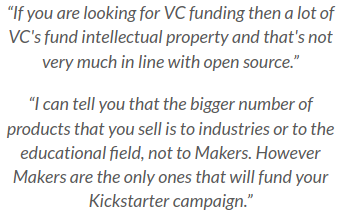
More onto distinctive characteristics, it was peculiar how the timing of the open source released was utilized. Unsurprisingly perhaps, the majority of the releases occurred at some point after the campaign had ended. This was not only to avoid being beaten to the market as one would expect, but also to create suspense and stimulate more support for the campaign. Interestingly, the most common reason behind open sourcing the product after the campaign was to ensure a mature code base when the project went public. Furthermore, the assumption that cheap copies would bring the demise was not necessarily acknowledged by the campaign organizers. In fact, we received diametric attitudes towards copycats. Some saw clones as a threat to profitability and reputation while others embraced it as inevitable, a sign of success or even… encouraged it. Some participants, critical towards copies, mentioned the case of a 3D printing company going bankrupt due to Chinese clones sold at a fraction of the original’s price. They pointed out that withholding the hardware source could be a way to impede cloning, citing Raspberry Pi as a prime example. Additionally, many campaign organizers consented to solidifying and strengthening the ties to the community being the means to constrain the impact of clones; a loyal community is more likely to purchase the authentic product.
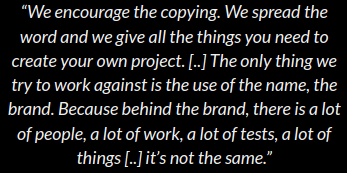
Open source software is expected to come at no cost and this was a challenge to some organizers. They explained that makers despite appreciating open source software they were not eager to pay for it by supporting a crowdfunding campaign which would deliver a purely software product. Instead, they would gladly back projects with hardware elements or utilities around the software, e.g. cloud services, storage. Financial support is warranted for products customers would have to pay for irrespective of whether they were open sourced. To put it differently, products with hardware that needs to be manufactured (e.g. by ourpcb.com) or software with running costs, servers etc. Subsequently, it could be cumbersome to crowdfund a project that is purely software and “self-contained”, namely feasible to utilize to full extent without specialized infrastructure or additional costs. That being said, this is not always the case. Magit, which I backed some months ago, is a purely software and contained product with a successful crowdfunding campaign, collecting over 70.000$. In any case, us software developers should not be discouraged but instead stay vigilant devising new revenue streams.
Overall, communities are regarded as a critical factor for both crowdfunding campaigns and open source projects, thus it comes to little surprise that organizers verified its importance. On one hand, they used the campaigns to spark the interest of the communities and test their products’ marketability. On the other, open source facilitated discussions and the formulation of think tanks around the projects, which in turn acted as a reach multiplier for the campaigns.
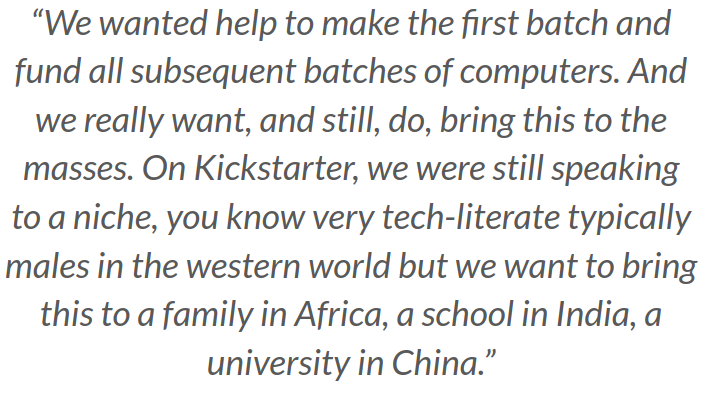 What I was personally not expecting were the testimonies as to when a dedicated community around the crowdfunded product was created. It appears that more often than not it never does! Specifically, we found out in approximately half of the cases no specialized community was formed. Additionally, previous engagement with open source was not deemed important at all. This can be particularly helpful to newcomers who should not feel obliged to invest resources into creating a niche of their own. Instead they can engage existing and broader communities. For example, if someone comes up with an IoT-oriented Arduino shield, they do not have to deploy their own customer support system, forum etc, but could merely gain and provide support in the existing Arduino forum, discuss in their Kickstarter campaign comments page etc. Nonetheless, it appears that if a dedicated community is to be, then this is most probable before rather than after the campaign.
What I was personally not expecting were the testimonies as to when a dedicated community around the crowdfunded product was created. It appears that more often than not it never does! Specifically, we found out in approximately half of the cases no specialized community was formed. Additionally, previous engagement with open source was not deemed important at all. This can be particularly helpful to newcomers who should not feel obliged to invest resources into creating a niche of their own. Instead they can engage existing and broader communities. For example, if someone comes up with an IoT-oriented Arduino shield, they do not have to deploy their own customer support system, forum etc, but could merely gain and provide support in the existing Arduino forum, discuss in their Kickstarter campaign comments page etc. Nonetheless, it appears that if a dedicated community is to be, then this is most probable before rather than after the campaign.
If we had to describe the communication between the organizers and the community in a couple of words this would be family-like. The close relationship inspired reciprocity, selflessness and goodwill, allowing the two parties to share attitudes. The community members would not see themselves as customers but instead as family members and organic parts of the project. As previously mentioned, they did not enjoy when the campaign appeared too profit-oriented so it was crucial to align the norms of the community with the business operations of the campaign. Campaign organizers sought to instill a feeling of belongingness in their supporter base. Giving credit and showing respect were also considered vital when dealing with open source enthusiasts.
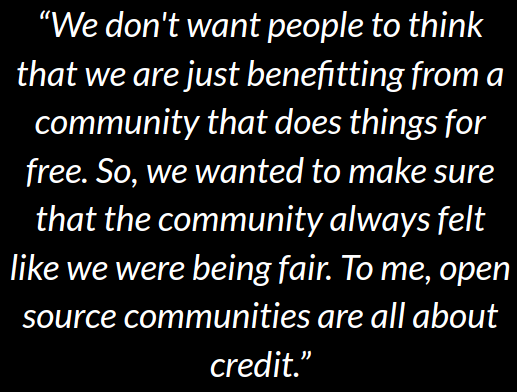
Communities were engaged via online and offline means. Twitter, Facebook and the crowdfunding platform’s updates were the most popular from the former, while Maker Faires and conferences were used for face to face meetings. That being said, the latter were deemed time consuming and not effective during the course of the campaigns. Furthermore, the marketing focus was noteworthily not on the open source nature of the product but rather on its functionality and its potential. The organizers appealed to the largest audience possible through the campaigns, thus cut down on the overly technical jargon to be more inclusive and “ease in” the less experienced backers.
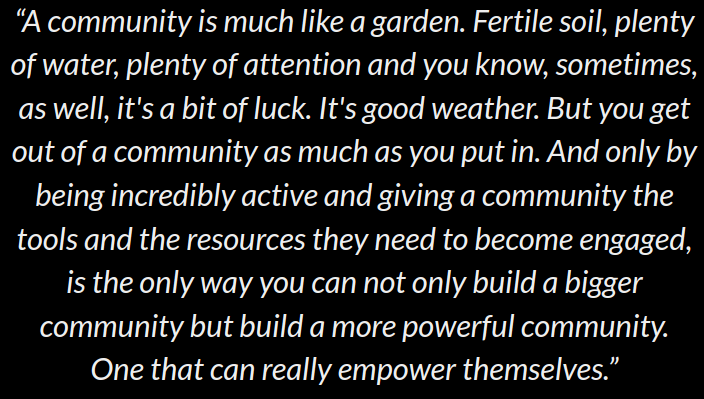
As to the overall impact of the community, the late open source release did limit the code contributions. However, perhaps naturally up to an extent, the projects that were open sourced prior the campaign received relatively more feature requests, usability remarks, code issues and bug reports. In any case listening to feedback, or even criticism, was seen as vital since most campaigns intended to establish a line of products as their follow-up move. Combined with open source, the existence of a vibrant and active community that comments, develops and raises awareness can be viewed as fundamental for a long-lasting and successful product ecosystem.
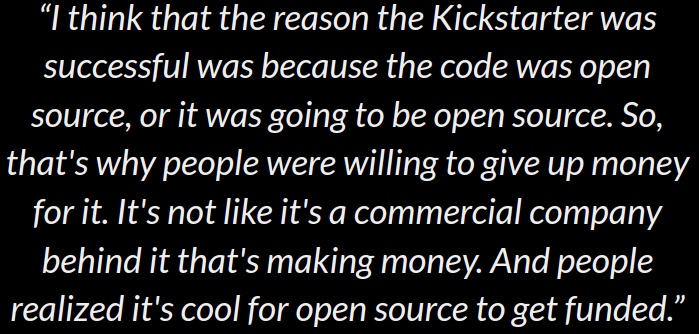
To conclude, we realized that it was not just about the impact of the community or open source on the campaign. These three concepts appeared so entangled and interdependent it is hard to determine the causality between them. Instead, we propose they are part of a chain which encompasses certain niche products, such as ones catered towards Makers and developers. Taking a step back we observe that once a such a product is developed, it makes sense to crowdfund it, open source it and appeal to the communities for financial support and technical contribution. We find crowdfunding, open source and communities so reliant on each other, often deeming them the only option. When this trilateral relationship is in harmony, success stories can be written with transparency, inclusion and democracy at their greatest!
